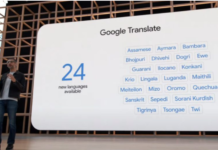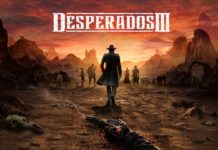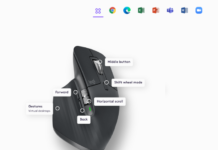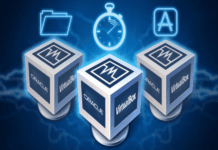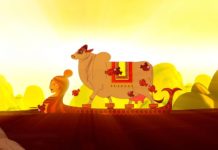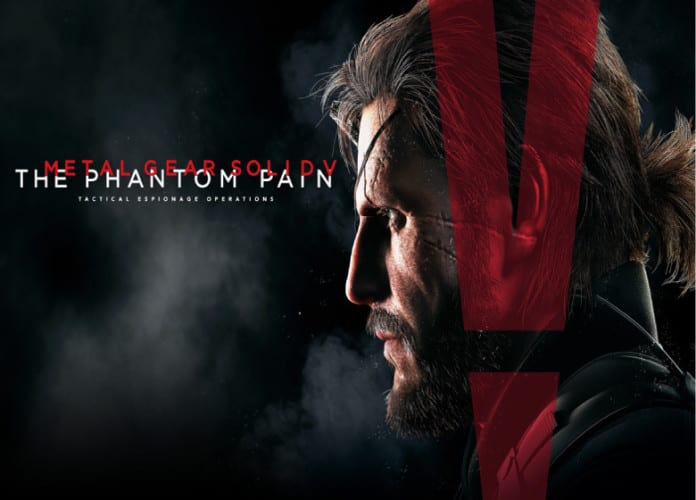Metal Gear Solid V: The Phantom Pain
It’s the last game in the iconic series, and Hideo Kojima has done everything possible to not only ensure that Metal Gear Solid V: The Phantom Pain is a masterpiece, but to create the first real title of the next-gen console era.
Besides a memorable story and a collection of iconic characters, The Phantom Pain also features one of the best gameplay mechanisms of any game. It combined the best gameplay elements of Snake Eater, Guns of the Patriots, and Peace Walker.
Players are tossed into an open-world environment while being forced to use stealth and their limited resources to survive. Like previous games, one has to adapt to the environment to overpower the enemy forces. Yet be warned – over time the enemy will adapt to the players’ tactics, and they’ll start coming equipped with stronger body armor and night vision.
A simple review of Metal Gear Solid V: The Phantom Pain could not properly describe how majestic this game truly is. Compared to so many titles this year, Fallout 4 will be its only rival for the honor of being “Game of the Year.” If you haven’t already, you need to play this title in order to understand what a masterpiece it is for the gaming arts.
After Metal Gear Solid V: Ground Zeroes, Konami launched a new awesome game for newcomers Metal Gear Solid V: The Phantom Pain – is an open world action-adventure stealth video game developed by Kojima Productions, directed, designed, co-produced and co-written by Hideo Kojima, published by Konami for Microsoft Windows, PlayStation 3, PlayStation 4, Xbox 360 and Xbox One.
The Phantom Pain was released worldwide on September 1, 2015. It serves as a sequel to Metal Gear Solid V: Ground Zeroes, the game follows the mercenary leader Punished “Venom” Snake as he ventures into Afghanistan and the Angola—Zaire border region to exact revenge on the people who destroyed his forces and came close to killing him during the climax of Ground Zeroes.

Kojima set out to depict the damage present in all returning soldiers in The Phantom Pain. Physical injuries such as the loss of limbs, and emotional wounds created through the loss of comrades and loved ones will all be part of this theme of pain. Kojima said that having his characters lose limbs is one way to depict the pain they carry.
The Phantom Pain was critically acclaimed upon release, with its gameplay drawing praise for featuring a variety of mechanics and interconnected systems which allow a high degree of player freedom in approaching objectives. While the story drew criticism from a few reviewers for its lack of focus, others acknowledged its emotional power and exploration of mature themes. The game received perfect review scores from several publications, including Famitsu, GameSpot(10/10) and IGN(10/9), and was described by critics as the greatest game in the Metal Gear series. The Phantom Pain is the first Metal Gear game to fully use an open world gameplay structure.
Storyline
As you remember Ground Zeroes, On March 16, 1975, shortly after the events of Ground Zeroes, Venom Snake fell into a coma. When he eventually awoke almost exactly nine years later, on March 11, 1984, a nurse noticed him having woken up and quickly alerted a doctor who informed Venom Snake about his medical condition and later told the latter that he had to leave as he was being looked for by enemy forces.
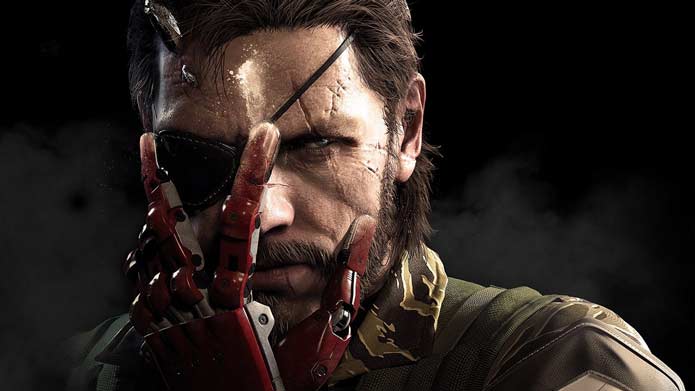
Venom Snake met a mysterious patient going by the name Ishmael who claimed to be an acquaintance of his and attempted to help him to his feet. Ishmael injected Venom Snake with Digoxin to give him some ability to regain his motor functions. During his nine-year coma, most of his muscles atrophied, and Big Boss was forced to slowly crawl. As they approached the elevator they encountered a child wearing a gas mask. The child immediately levitated and passed through the ceiling as the elevator exploded, violently throwing them to the floor. A disoriented Venom Snake witnessed a ghost-like figure out of the fire.
He quickly retreated with Ishmael in another direction, attempting to escape the hospital as a military chopper was searching the area around the building. Venom Snake and Ishmael managed to commandeer an ambulance but end up crashing it shortly thereafter. As Venom Snake crawled from the crashed ambulance, through its broken front window, he was once again confronted by the gas mask-wearing child who summoned a huge flame in the shape of a humpback whale which engulfed an attack chopper which was advancing toward them. Venom Snake somehow managed to escape and was eventually picked up and rescued by Ocelot. The two then escape on horseback while being pursued by a fiery apparition of a demon riding a unicorn.
Afghanistan
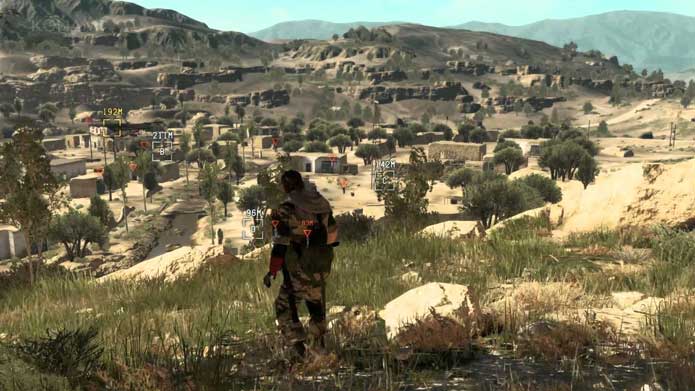
Sometime after their escape, Ocelot and Venom Snake traveled to Afghanistan. On March 24, they rode into a Soviet-controlled area of Northern Kabul on horseback in order to find an outpost where Miller had supposedly been held captive for ten days. Ocelot believed that Miller only had about three days left to live so he tasked Venom Snake with infiltrating the area and rescuing him so that they could have a chance at exacting revenge on those responsible for putting Venom Snake in a coma. After Ocelot provided Venom Snake with his mission briefing, the two parted ways and Venom Snake went to rescue Miller with Ocelot lending him support from Mother Base via radio. Venom Snake managed to find Miller, whose right arm and left leg had been amputated during his captivity and took him back to Mother Base.
Gameplay
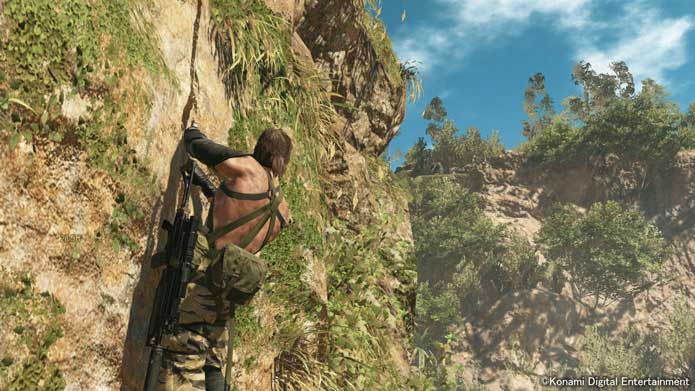
Players control Snake through the game map and attempt to complete missions while avoiding being spotted by the enemy. In The Phantom Pain, players take the role of Big Boss, under the nickname Punished “Venom” Snake, in an open world environment. The gameplay elements were largely unchanged from Ground Zeroes, Included in Snake’s repertoire are binoculars, maps, pistols, assault rifles and explosives. Players may traverse the game world with vehicles such as cars and tanks, in addition to traveling on foot or on horseback, and as certain locations are mountainous, they may also call for friendly helicopter support against enemy soldiers in a combat alert or send commandos to scout a target area. Snake can also call on AI companions—including Quiet, a silent female sniper with supernatural abilities; D-Horse, a horse with a customizable saddle for carrying more equipment in the field; D-Walker, a manned, highly agile mobile weapons platform that can provide heavy weapons support; and D-Dog, a wolf pup raised and trained on the new Mother Base to assist him in the field. The companions’ abilities and their effectiveness will depend on the player’s relationship with them.
The Phantom Pain will offer a base-building feature that allows players to develop weapons and items from their home base. The player is given the option to access their base from their real-life smartphones and other devices via a companion app allowing the base to grow the organization. Money for upgrading Mother Base’s defenses and technology can be collected from objects found all over the map, such as diamonds, shipping containers, and special blueprint boxes. As well as sending recruited soldiers on combat missions around the world. The income is invested on upgrades to the appearance and abilities, weapons and equipment of Snake, his AI companions, and vehicles. For example, Snake’s prosthetic arm can be modified with a taser, echolocation function, or remote controls that allow it to fly as a drone.
Series director Hideo Kojima revealed that the game has a new day-and-night cycle that runs in real-time, and that the time was taken to travel from one location to another will affect the time of day when the player arrives at their destination. Konami confirmed that the playable world in The Phantom Pain is two hundred times larger than that of Ground Zeroes, featuring a variety of climate conditions and environments. This allows the players to freely roam the map while proceeding to either story missions or sidequests, as in other games with nonlinear gameplay. In addition, players who have previously played Ground Zeroes are able to import save data into The Phantom Pain and gain special perks.
Multiplayer

Metal Gear Solid V: The Phantom Pain will include two multiplayer modes: first, the new Metal Gear Online, developed by Kojima Productions’ newly formed Los Angeles division. The first footage for multiplayer was revealed in December 2014.While originally set for launch alongside the release of The Phantom Pain, Metal Gear Online was postponed to October 6 for consoles and January 2016 for Microsoft Windows.
[su_youtube_advanced url=”https://www.youtube.com/watch?v=csfLTp40i3E&index=1&list=PLgTrfG31zrEeefGr4N4yILR68apkSpdqE” rel=”no”]https://youtu.be/dOAr5_0_1y4[/su_youtube_advanced]
System Requirements for the PC Version
Minimum:
- OS: Windows 7×64, Windows 8×64 (64-bit OS required)
- Processor: Intel Core i5-4460 (3.40 GHz) or better; Quad-core or better
- Memory: 4 GB RAM
- Graphics: NVIDIA GeForce GTX 650 (2GB) or better (DirectX 11 card required)
- DirectX: Version 11
- Hard Drive: 28 GB available space
- Sound Card: DirectX 9.0c compatible sound card
Recommended:
- OS: Windows 7×64, Windows 8×64 (64-bit OS required)
- Processor: Intel Core i7-4790 (3.60GHz) or better; Quad-core or better
- Memory: 8 GB RAM
- Graphics: NVIDIA GeForce GTX 760 (DirectX 11 graphic card required)
- DirectX: Version 11
- Hard Drive: 28 GB available space
- Sound Card: DirectX 9.0c compatible sound card (Surround Sound 5.1)
Dispute between Konami and Kojima
In March 2015, Konami announced plans for a corporate restructuring that saw them part ways with Hideo Kojima and his development studio Kojima Productions. As part of the separation, Kojima’s name was removed from the game cover, all of its associated paraphernalia and future releases of Metal Gear Solid V: Ground Zeroes and Metal Gear Solid: The Legacy Collection. A Konami spokesperson stated that Kojima would still be involved with Konami and the Metal Gear franchise, and despite the dispute, the company expressed confidence that the game would be declared Game of the Year.
As a result of the ongoing dispute, controversy arose at the time of The Phantom Pain’s release due to evidence that pivotal story content had been cut from the final version. Shortly after launch, those who had bought the Collector’s Edition of the game soon discovered that the bonus disc included contained footage of an in-game mission, “Episode 51”, that continued on from the end of the campaign, but which had not actually been included in the game itself. The mission itself tied up an important plot thread involving the relationship between two of the characters, and many fans felt it would have been a more satisfactory ending to the game. Many concluded that Konami had been looking to release the game sooner than Kojima had intended and that Konami had been unhappy with how much Kojima had spent on the game’s development.
A similar controversy arose in the following days. Users of the Facepunch forums who had been extracting data from the PC version of the game’s files found evidence of a story chapter, titled “Chapter 3: Peace”, that had not been included in the final version of the game. Konami later neither confirmed nor denied that “Chapter 3” had been fully cut from the main game. Metal Gear Solid community manager Robert Allen Peeler was later asked via Twitter if any upcoming downloadable content would be released for The Phantom Pain, in the hope that “Chapter 3” would be included, but this was denied.








